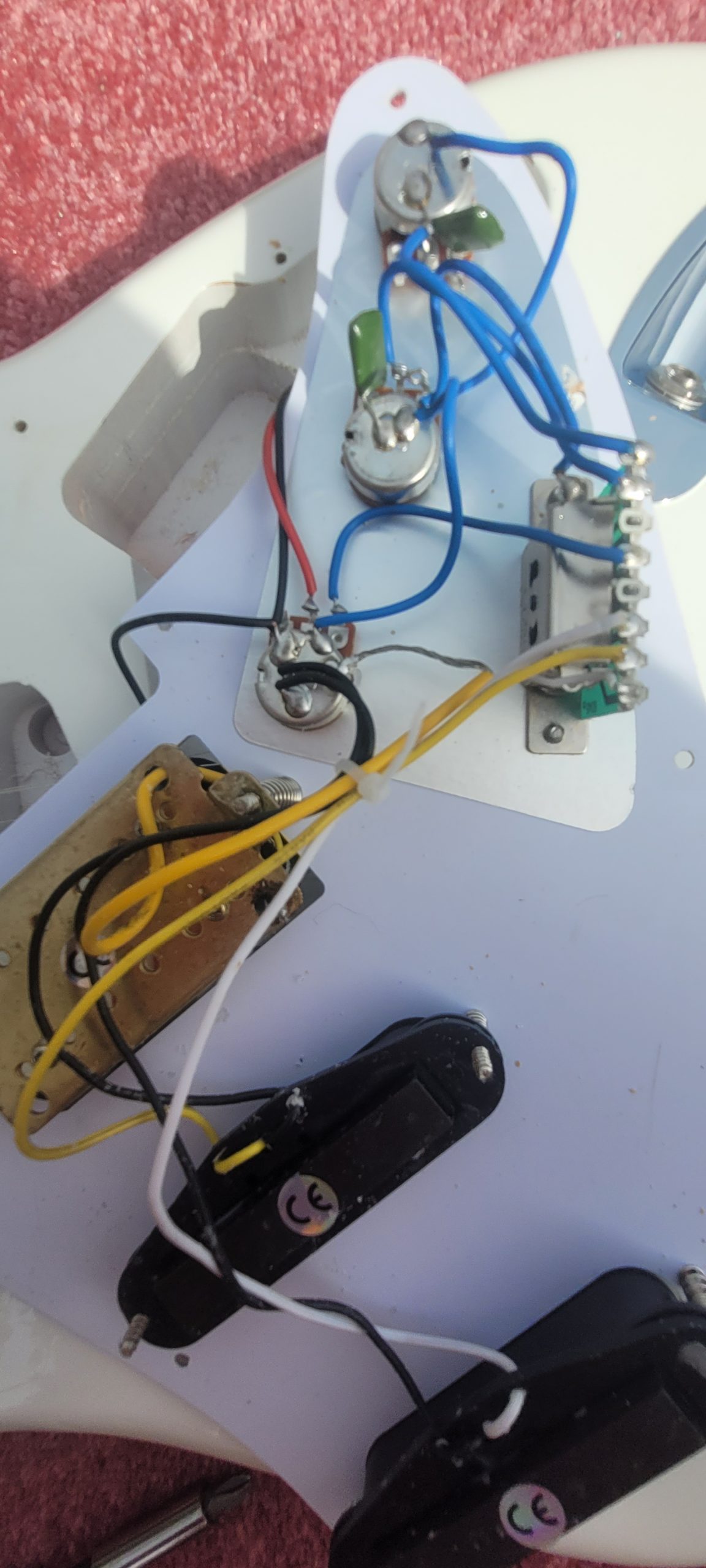

How can this wiring even work. It undermines all that I know and understand about how a 5 Way Switch works. From all that i read on Google from various sources this 5 Way switch appears to have been wired up incorrectly. A 5 way switch is supposed to have 2 sides to the switch albeit that this is an imported 5 way where the configuration runs up all on one side. However in principle it operates exactly the same as the original Fender 5 way switches. It has a Part A which are the the first 4 connectors then a Part B which are the next 4 connectors. Both sides are separate so that Part A ends at connector 4. The first 3 connectors are normally connections for pickups starting with Bridge, the Middle than Neck. The 4th connector is a common to all these inputs and is usually used to either take output from the switch to the Volume pot Input. however it can also be used with a bridging wire to connect up both sides of the switch to open up more options for connectivity.
So what is baffling about this wiring is the output to the Volume Pot goes out from Connector 5 on the switch. this should be the Common to the second B Part of the switch. There is no bridging wire being used to connect 4 to 5 so the switch parts remain separate. Therefore Parts A and parts B of the switch remain separated. There should be no signal here to send to the Volume Pot. however before I undertook the breakup of the guitar it was working. So what was making it work because from what I understand about 5 Way switches this was not possible? Can anyone enlighten me. most of the research that I have done on Google supports my assumptions.
This guitar was originally set up with a HSS configuration.